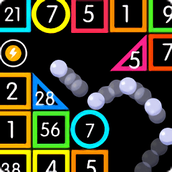最新下载
热门教程
- 1
- 2
- 3
- 4
- 5
- 6
- 7
- 8
- 9
- 10
Ruby 集合与容器对象用法详解
时间:2022-06-25 02:12:52 编辑:袖梨 来源:一聚教程网
数组(array),散列(hash)。array 里的项目有顺序,你可以用索引号得到对应的项目。hash 里的项目是成对的,一对里有个 key 还有个对应的 value。得到项目的 value 可以使用项目的 key 。
任何的 Ruby 对象都可以作为 hash 的 key 或者 value ,不过注意 key 在 hash 里一定是唯一的。hash 在其它的语言上也叫 dictionaries 或者 associative arrays 。
array 与 hash 很像。在某种意义上 array 就是 hash,只不过它的 key 是连续的整数。hash 有某种意义上也是 array,只不过索引可以是任何东西。
做个实验:
array = ["ruby", "diamond", "emerald"]
hash = { 0 => "ruby", 1 => "diamond", 2 => "emerald" }
puts array[0] # ruby
puts hash[0] # ruby
再做个实验:
hash = { "red" => "ruby", "white" => "diamond", "green" => "emerald" }
hash.each.with_index {|(key,value),i|
puts "Pair #{i} is: #{key}/#{value}"
}
输出的是:
Pair 0 is: red/ruby
Pair 1 is: white/diamond
Pair 2 is: green/emerald
数组
创建新数组
有几种方法:
Array.new 方法
字面构造器:[]
Array 顶级方法
%w{...},%i{...}
Array.new
a = Array.new
设置数组的尺寸与内容:
>> Array.new(3)
=> [nil, nil, nil]
>> Array.new(3, "abc")
=> ["abc", "abc", "abc"]
提供一个代码块:
>> n = 0
=> 0
>> Array.new(3) { n += 1; n * 10 }
=> [10, 20, 30]
再做个实验:
>> a = Array.new(3, "abc")
=> ["abc", "abc", "abc"]
>> a[0] << "def"
=> "abcdef"
>> puts a[1]
abcdef
=> nil
上面的 abc 是同一个东西。想不同的话需要这样:
Array.new(3) { "abc" }
字面构造器
数组字面构造器是:[]
a = []
创建的时候可以直接往数组里添加对象:
a = [1,2,"three",4,[]]
Array 方法
>> string = 'hello'
=> "hello"
>> string.respond_to?(:to_ary)
=> false
>> string.respond_to?(:to_a)
=> false
>> Array(string)
=> ["hello"]
>> def string.to_a
>> split(//)
>> end
=> :to_a
>> Array(string)
=> ["h", "e", "l", "l", "o"]
%w 与 %W
>> %w{ I Love You }
=> ["I", "Love", "You"]
%W 可以用双引号解析。
%i 与 %I
符号数组。
>> %i{ a b c }
=> [:a, :b, :c]
>> w = "love"
=> "love"
>> %I{"#{w}"}
=> [:""love""]
try_convert
>> obj = Object.new
=> #
>> Array.try_convert(obj)
=> nil
>> def obj.to_ary
>> [1,2,3]
>> end
=> :to_ary
>> Array.try_convert(obj)
=> [1, 2, 3]
>> def obj.to_ary
>> "not an array!"
>> end
=> :to_ary
>> Array.try_convert(obj)
TypeError: can't convert Object to Array (Object#to_ary gives String)
from (irb):199:in `try_convert'
from (irb):199
from /usr/local/bin/irb:11:in `
插入,取回,删除数组项目
插入项目:
a = []
a[0] = "first"
a[0] 是一种语法糖, 实际上是一个方法的调用,脱了它的糖衣应该是:
a.[]=(0, "first")
取回项目:
>> a = [1,2,3,4,5]
=> [1, 2, 3, 4, 5]
>> p a[2]
3
=> 3
a[2] 也是语法糖,脱了糖衣应该是:
a.[](2)
一次多个项目
>> a = ["red", "orange", "yellow", "purple", "gray", "indigo", "violet"]
=> ["red", "orange", "yellow", "purple", "gray", "indigo", "violet"]
>> a[3,2]
=> ["purple", "gray"]
>> a[3,2] = "green", "blue"
=> ["green", "blue"]
>> a
=> ["red", "orange", "yellow", "green", "blue", "indigo", "violet"]
slice 方法跟 [] 一样用。
>> a.values_at(0,3)
=> ["red", "green"]
数组的开头与结尾
unshift 在数组的最前面添加个项目:
>> a = [1,2,3]
=> [1, 2, 3]
>> a.unshift(0)
=> [0, 1, 2, 3]
push 会在数组最后添加项目:
>> a = [1,2,3]
=> [1, 2, 3]
>> a.push(4)
=> [1, 2, 3, 4]
也可以用 << ,像这样:
>> a << 5
=> [1, 2, 3, 4, 5]
push 可以添加多个项目。
用 shift 与 pop 删除数组里的项目:
>> a = [1,2,3,4,5]
=> [1, 2, 3, 4, 5]
>> popped = a.pop
=> 5
>> puts popped
5
=> nil
>> p a
[1, 2, 3, 4]
=> [1, 2, 3, 4]
>> shifted = a.shift
=> 1
>> puts shifted
1
=> nil
>> p a
[2, 3, 4]
=> [2, 3, 4]
合并数组
先试试 concat:
>> [1,2,3].concat([4,5,6])
=> [1, 2, 3, 4, 5, 6]
concat 会改变源数组,如果你想得到一个新的合并以后的数组,可以使用 + :
>> a = [1,2,3]
=> [1, 2, 3]
>> b = a + [4,5,6]
=> [1, 2, 3, 4, 5, 6]
>> a
=> [1, 2, 3]
用 replace 替换:
>> a = [1,2,3]
=> [1, 2, 3]
>> a.replace([4,5,6])
=> [4, 5, 6]
>> a
=> [4, 5, 6]
再做个实验理解一下 = 与 replace 的区别:
>> a = [1,2,3]
=> [1, 2, 3]
>> b = a
=> [1, 2, 3]
>> a.replace([4,5,6])
=> [4, 5, 6]
>> b
=> [4, 5, 6]
>> a = [7,8,9]
=> [7, 8, 9]
>> b
=> [4, 5, 6]
数组转型
flatten,去掉数组里的层级,在参数里可以指定要去掉的层级数:
>> array = [1,2,[3,4[5]],[6,[7,8]]]
=> [1, 2, [3, 0], [6, [7, 8]]]
>> array.flatten
=> [1, 2, 3, 0, 6, 7, 8]
>> array.flatten(1)
=> [1, 2, 3, 0, 6, [7, 8]]
>> array.flatten(2)
=> [1, 2, 3, 0, 6, 7, 8]
reverse 颠倒:
>> [1,2,3].reverse
=> [3, 2, 1]
join:
>> ["abc", "def", 123].join
=> "abcdef123"
join 的参数:
>> ["abc", "def", 123].join(", ")
=> "abc, def, 123"
还有种合并的方法:
>> a = %w{ one two three }
=> ["one", "two", "three"]
>> a * "-"
=> "one-two-three"
去掉重复:
>> [1,2,3,3].uniq
=> [1, 2, 3]
去掉 nil:
>> zip_codes = ["06511", "08902", "08902", nil, "10027",
"08902", nil, "06511"]
=> ["06511", "08902", "08902", nil, "10027", "08902", nil, "06511"]
>> zip_codes.compact
=> ["06511", "08902", "08902", "10027", "08902", "06511"]
数组查询
a.size,a.length:项目的数量
a.empty?:空白吗?
a.include?(item):有某个项目吗?
a.count(item):这个项目有多少?
a.first(n=1):前几个项目
a.last(n=1):后几个项目
a.sample(n=1):随机项目
实验:
>> a
=> ["one", "two", "three"]
>> a.first(n=1)
=> ["one"]
>> a.first(n=2)
=> ["one", "two"]
>> a.last(n=1)
=> ["three"]
>> a.sample(n=1)
=> ["two"]
>> a.sample(n=1)
=> ["one"]
hash
先做个实验,创建一个 hash,根据用户的输入,得到地区的缩写:
p_hash = {
"北京" => "BJ",
"上海" => "SH",
"广州" => "GZ"
}
print "输入地区的名字:"
p = gets.chomp
abbr = p_hash[p]
puts "地区的缩写是 #{abbr}"
创建 hash
几个方法可以创建 hash:
字面构造器:{}
Hash.new 方法
Hash.[] 方法
Hash 顶级方法
创建字面 hash
大括号里面是 hash 项目,每个项目都有 key ,还有对应的 value,它们中间用 => 符号连接,项目与项目之间用逗号分隔开。
Hash.new
Hash.[] 类方法
>> Hash["北京", "BJ", "上海", "SH"]
=> {"北京"=>"BJ", "上海"=>"SH"}
>> Hash[ [[1,2], [3,4], [5,6]] ]
=> {1=>2, 3=>4, 5=>6}
Hash 方法
Hash 方法有点特别的行为。调用的时候给它一个空白的数组([ ])或 nil,它会返回一个空白的 hash。不然它会在参数上调用 to_hash ,如果数组没 to_hash 方法,就会触发错误。
插入,取回,删除 hash 项目
添加新项目到 hash 里
用 []= 方法:
p_hash["山东"] = "SD"
脱掉糖衣应该是这样的:
p_hash.[]=("山东", "SD")
store 也可以:
p_hash.store("山东", "SD")
做个实验:
>> h = Hash.new
=> {}
>> h["a"] = 1
=> 1
>> h["a"] = 2
=> 2
>> puts h["a"]
2
=> nil
获取值
用 [] 方法:
>> p_hash["北京"]
=> "BJ"
用 fetch 方法也行:
>> p_hash.fetch("北京")
=> "BJ"
[] 与 fetch 的区别是,fetch 不存在的 key 的时候会出现异常,而 [] 会返回 nil 。
>> p_hash.fetch("云南", "Unknown state")
=> "Unknown state"
多个 key :
>> p_hash.values_at("北京", "上海")
=> ["BJ", "SH"]
默认 hash 值与行为
这是默认的情况:
>> h = Hash.new
=> {}
>> h["no such key!"]
=> nil
设置默认的值:
>> h = Hash.new(0)
=> {}
>> h["no such key!"]
=> 0
这样试一下:
h = Hash.new {|hash,key| hash[key] = 0 }
再这样:
>> h["new key!"]
=> 0
>> h
=> {"new key!"=>0}
合并 hash
update,有破坏性的合并:
>> h1 = {"Smith" => "John", "Jones" => "Jane" }
=> {"Smith"=>"John", "Jones"=>"Jane"}
>> h2 = {"Smith" => "Jim"}
=> {"Smith"=>"Jim"}
>> h1.update(h2)
=> {"Smith"=>"Jim", "Jones"=>"Jane"}
>> puts h1["Smith"]
Jim
=> nil
merge,不具破坏性的合并:
>> h1 = {"Smith" => "John", "Jones" => "Jane" }
=> {"Smith"=>"John", "Jones"=>"Jane"}
>> h2 = {"Smith" => "Jim"}
=> {"Smith"=>"Jim"}
>> h3 = h1.merge(h2)
=> {"Smith"=>"Jim", "Jones"=>"Jane"}
>> p h1["Smith"]
"John"
=> "John"
hash 变型
选择与拒绝元素
>> h = Hash[1,2,3,4,5,6]
=> {1=>2, 3=>4, 5=>6}
>> h.select {|k,v| k > 1}
=> {3=>4, 5=>6}
reject:
>> h.reject {|k,v| k > 1}
=> {1=>2}
keep_if:
>> h
=> {1=>2, 3=>4, 5=>6}
>> h.keep_if {|k,v| k > 1}
=> {3=>4, 5=>6}
>> h
=> {3=>4, 5=>6}
delete_if:
>> h
=> {3=>4, 5=>6}
>> h.delete_if {|k,v| k > 3}
=> {3=>4}
>> h
=> {3=>4}
颠倒
invert:
>> h = { 1 => "one", 2 => "two" }
=> {1=>"one", 2=>"two"}
>> h.invert
=> {"one"=>1, "two"=>2}
注意 key 必须得是唯一的。
>> h = { 1 => "one", 2 => "more than 1", 3 => "more than 1" }
=> {1=>"one", 2=>"more than 1", 3=>"more than 1"}
>> h.invert
=> {"one"=>1, "more than 1"=>3}
清空
clear:
>> {1 => "one", 2 => "two"}.clear
=> {}
替换
>> { 1 => "one", 2 => "two" }.replace({ 10 => "ten", 20 => "twenty"})
=> {10 => "ten", 20 => "twenty"}
查询 hash
h.has_key?(1)
h.include?(1)
h.key?(1)
h.member?(1)
h.has_value?("three")
h.value?("three")
h.empty?
h.size
hash 作为方法的参数
参数列表里的最后一个参数是个 hash,不用 {} 了。
add_to_city_datebase("New York City",
state: "New York",
population: 7000000,
nickname: "Big Apple"
)
方法应该像这样定义:
def add_to_city_datebase(name, info)
c = City.new
c.name = name
c.state = info[:state]
c.population = info[:population]
# ...
命名的参数
定义方法的时候这么干:
>> def m(a:, b:)
>> p a,b
>> end
=> :m
>> m(a: 1, b: 2)
1
2
=> [1, 2]
默认参数:
>> def m(a: 1, b: 2)
>> p a,b
>> end
=> :m
>> self.m
1
2
=> [1, 2]
>> m(a:10)
10
2
=> [10, 2]
你猜猜 :
>> def m(a: 1, b: 2, **c)
>> p a,b,c
>> end
=> :m
>> m(x: 1, y: 2)
1
2
{:x=>1, :y=>2}
=> [1, 2, {:x=>1, :y=>2}]
>> def m(x, y, *z, a: 1, b:, **c, &block)
>> p x,y,z,a,b,c
>> end
=> :m
>> m(1,2,3,4,5,b:10,p:20,q:30)
1
2
[3, 4, 5]
1
10
{:p=>20, :q=>30}
=> [1, 2, [3, 4, 5], 1, 10, {:p=>20, :q=>30}]
Range
Range:范围
包含(inclusion)—— 给的值在一个范围里吗?
枚举(enumeration)—— 把范围可获取的单立项目的集合
创建一个 range
Range.new:
>> r = Range.new(1, 100)
=> 1..100
上面创建的是 inclusive range,再创建一个 exclusive range,用三个点:
>> r = 1...100
=> 1...100
Range-inclusion 逻辑
begin 与 end
>> r = 1..10
=> 1..10
>> r.begin
=> 1
>> r.end
=> 10
exclusive range?
>> r.exclude_end?
=> false
cover?
如果给方法的参数大于 range 的起点,小于终点,range 说它 cover 了这个对象。
>> r = "a".."z"
=> "a".."z"
>> r.cover?("a")
=> true
>> r.cover?("abc")
=> true
>> r.cover?("A")
=> false
"a" >= "a"
"a" <= "z"
"abc" >= "a"
"abc" <= "z"
"A" < "a"
不兼容的情况:
>> r.cover?([])
=> false
include?
include? 把 range 看成是一个值的集合。
>> r.include?("a")
=> true
>> r.include?("abc")
=> false
>> r = 1.0..2.0
=> 1.0..2.0
>> r.include?(1.5)
=> true
Set
使用 Set 先得:
require 'set'
set 是一个集合,它里面的项目都是唯一的。项目可以是任何东西,字符串,整数,数组,其它的 set 等。
创建 set
Set.new 构造器创建 set 。
>> require('set')
=> false
>> n = [1,2,3]
=> [1, 2, 3]
>> n_set = Set.new(n)
=> #
给构造器提供一个代码块:
>> names = ["David", "Yukihiro", "Amy"]
=> ["David", "Yukihiro", "Amy"]
>> name_set = Set.new(names) {|name| name.upcase}
=> #
处理 set 元素
>> n = Set.new([1,2])
=> #
>> n << 3
=> #
>> n << 3
=> #
>> n
=> #
delete
>> n.delete(2)
=> #
add
>> n.add?(2)
=> #
>> n
=> #
>> n.add?(2)
=> nil
intersection,union,difference
intersection,别名 &
union,别名 + 与 |
difference,别名 -
这些方法都会返回新的 set。
>> n = Set.new([1, 2, 3])
=> #
>> n1 = Set.new([3, 4, 5])
=> #
>> n - n1
=> #
>> n + n1
=> #
>> n & n1
=> #
>> n | n1
=> #
^
>> n ^ n1
=> #
merge
>> n
=> #
>> n.object_id
=> 70179526750720
>> n.merge([4])
=> #
>> n.object_id
=> 70179526750720
跟 hash 合并:
>> n
=> #
>> n.merge({"北京" => "BJ"})
=> #
subset 与 superset
subset:子集,superset:超集
>> n = Set.new([1, 2, 3])
=> #
>> n1 = Set_new([1, 2])
>> n1.subset?(n)
=> true
>> n.superset?(n1)
=> true
proper_subset 与 proper_superset。proper 子集至少要比父级少一个项目,如果两个 set 一样,那它们是彼此的 subset,但不是 proper 子集。
相关文章
- 申通快递单号查询入口-申通快递官网快速查询通道 12-21
- E站免下载网页版-ehviewer在线版直接畅玩 12-21
- YY漫画官方正版登录入口-YY漫画官网正版一键登录 12-21
- Yandex入口网址在哪 俄罗斯Yandex搜索引擎官网首页 12-21
- B站主入口-Bilibili官网极速登录通道 12-21
- 雨课堂网页版官网网址是什么 雨课堂网页版登录入口在哪 12-21














